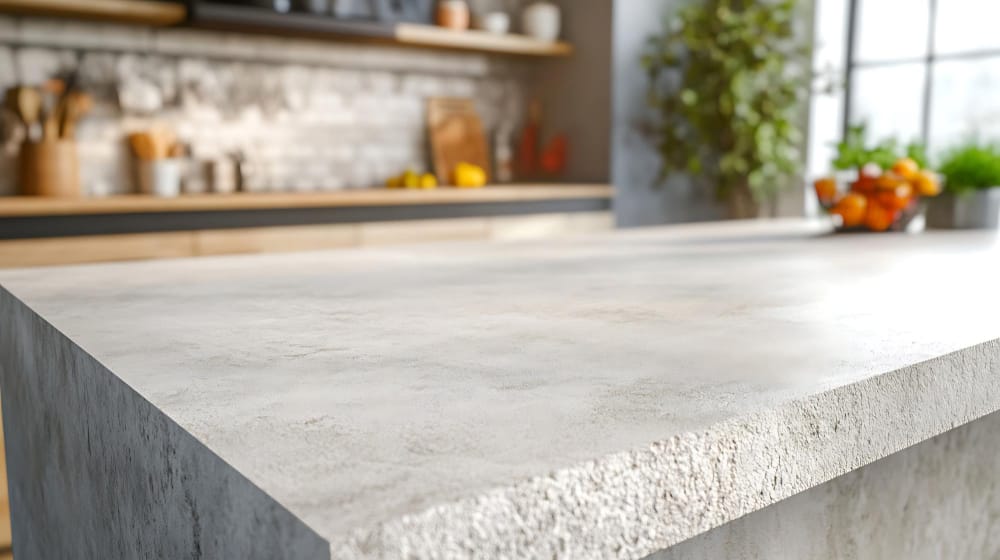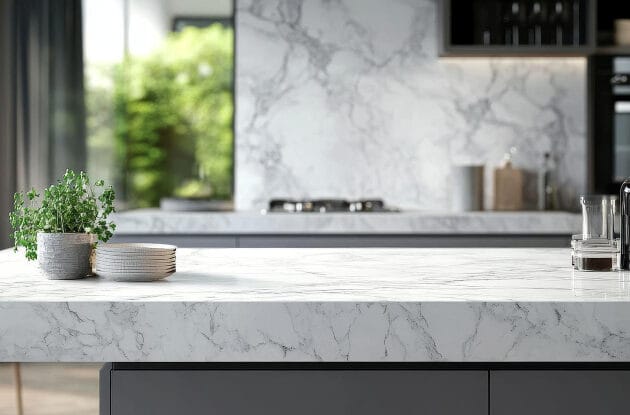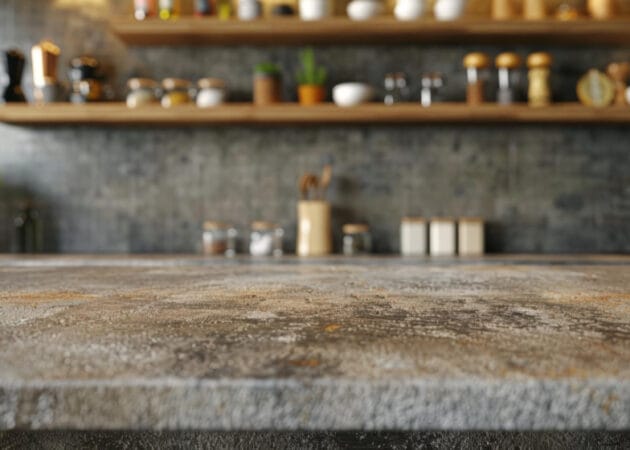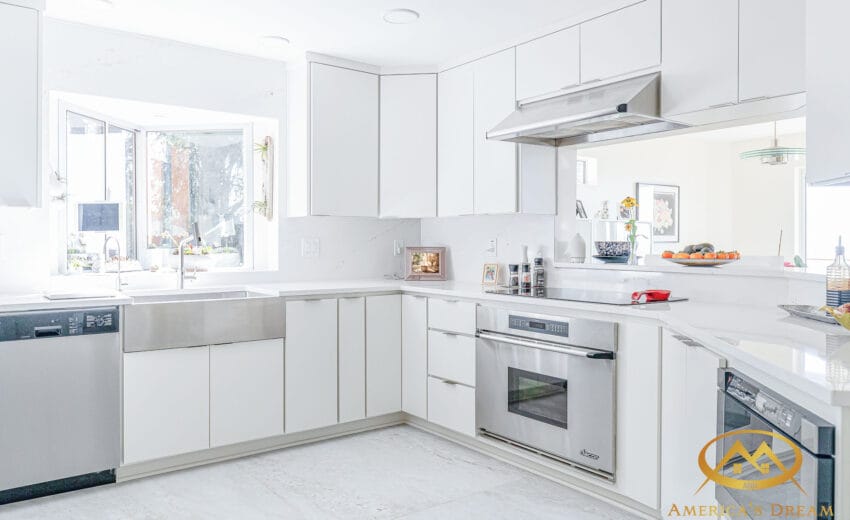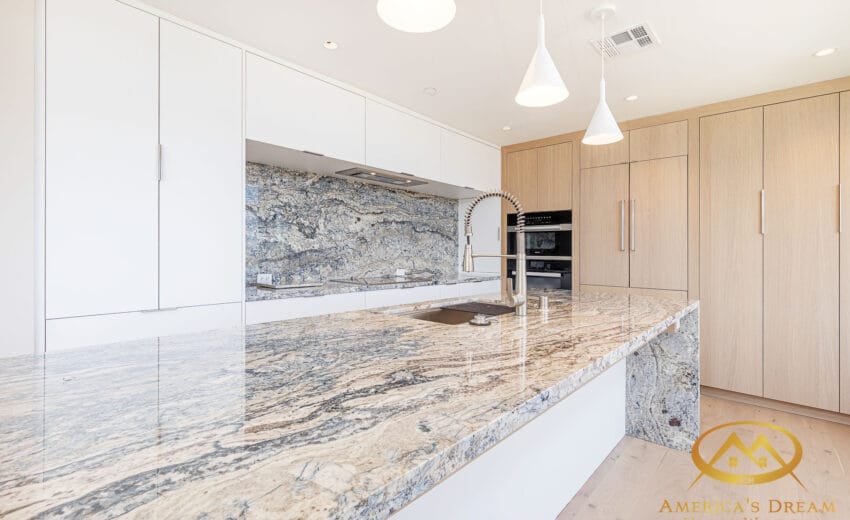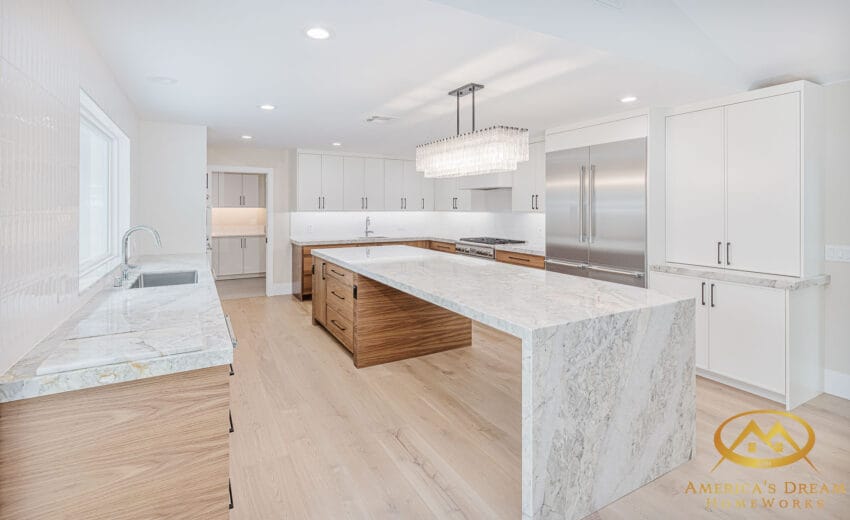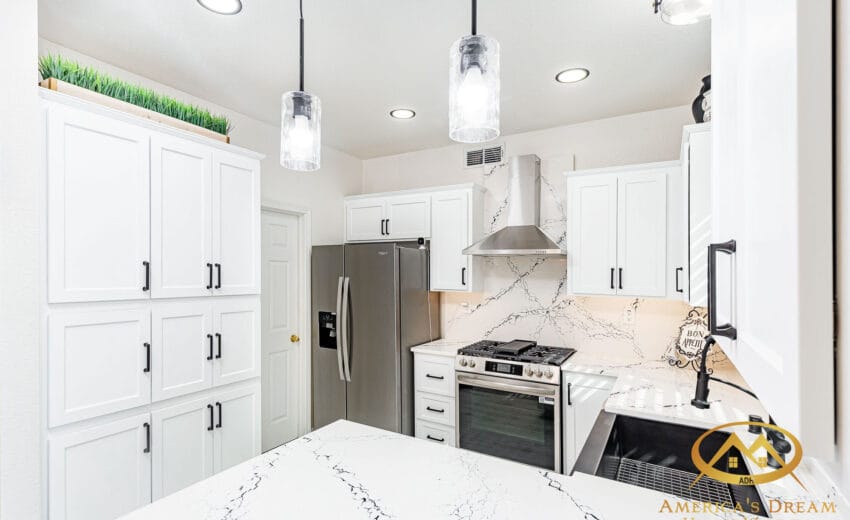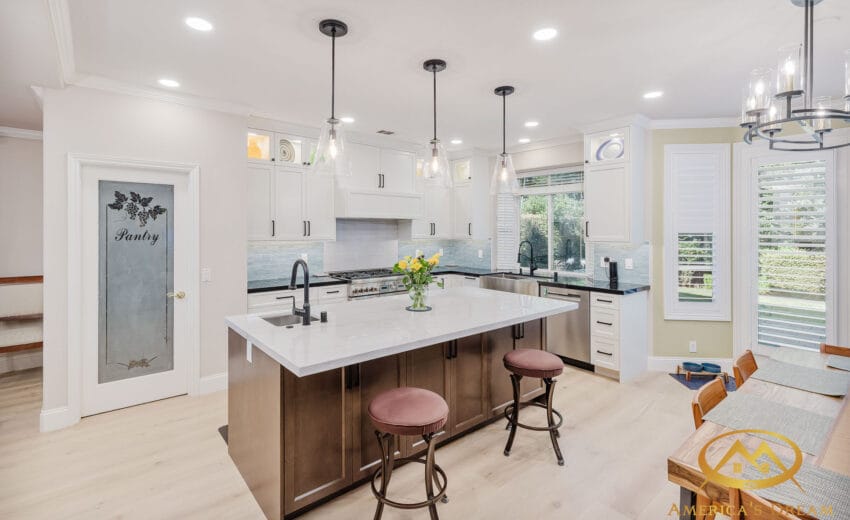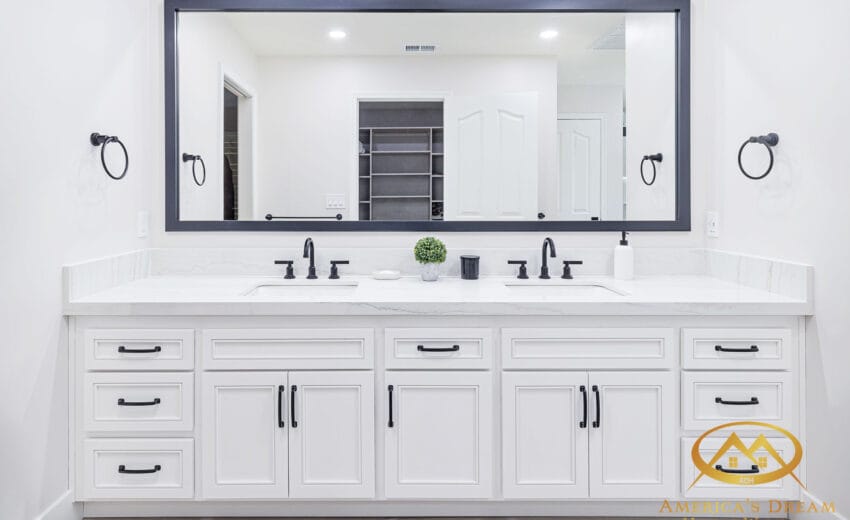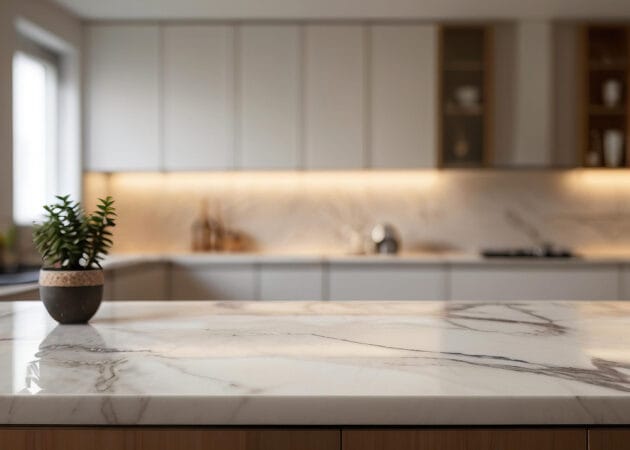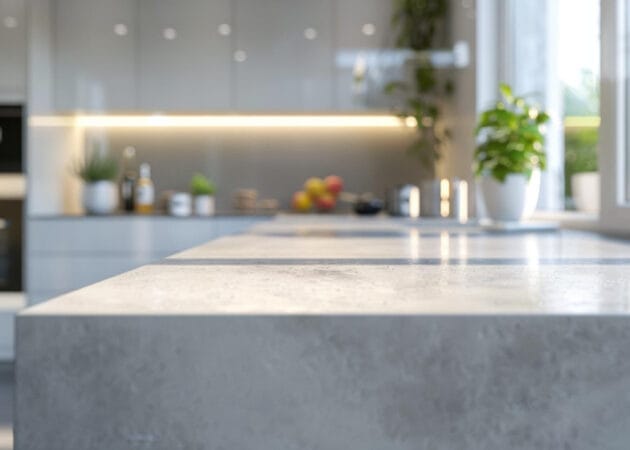When you picture your dream kitchen or bathroom, the countertop is probably one of the first details that comes to mind. Sleek quartz, warm butcher block, timeless granite — these surfaces define the space. But here’s a question many homeowners overlook until they’re knee-deep in remodeling: how thick is a countertop supposed to be?
The answer isn’t one-size-fits-all. Countertop thickness impacts not only style, but also durability, cost, and even how your cabinetry supports the material. Let’s look at the numbers and design insights that help you make the right choice.
Standard Countertop Thickness
Most countertops fall into two common thickness categories:
2 cm (about ¾ inch)
3 cm (about 1 ¼ inches)
These standards apply to materials like granite, marble, and Silestone countertops. Both options are widely available, but each has pros and cons.
2 cm countertops are lighter, less expensive, and often used in bathrooms or on furniture tops.
3 cm countertops are thicker, sturdier, and usually the go-to choice for kitchens.
👉 According to the National Kitchen & Bath Association (NKBA), 3 cm quartz and granite have become the most popular choice for modern kitchens due to their strength and premium look.
Why Thickness Matters
Thickness isn’t just about aesthetics. It influences several factors:
Durability
Thicker slabs (3 cm) resist cracking and chipping better.
Thinner slabs (2 cm) often require a plywood substrate for support.
Cost
A 2 cm countertop can cost 15–25% less than a 3 cm option.
But if extra support or edge build-up is needed, the savings shrink.
Design Impact
A slim 2 cm profile feels sleek and modern.
A thicker 3 cm slab conveys luxury and substance.
Cabinet Compatibility
Heavy 3 cm slabs need sturdy custom cabinetry beneath.
2 cm slabs work well for lightweight applications, like bathroom vanities.
Edge Profiles and Illusion of Thickness
Here’s where design gets fun. Edge profiles can change how thick your countertop looks, even if the slab itself is standard.
Mitered edge: Joins two pieces at a 45-degree angle, creating the look of a much thicker slab.
Ogee or bullnose edge: Adds curves and detail, enhancing visual weight.
Straight edge: Clean and modern, showing true thickness.
👉 With the right edge, a 2 cm countertop can mimic the presence of a 3 cm or even 4 cm slab.
Check Our Recent Projects
Material Comparisons
Not all countertop materials follow the same rules:
Quartz & Granite: Standard at 2 cm and 3 cm. Most kitchens use 3 cm.
Marble: Often cut in 2 cm slabs due to weight, but also available in 3 cm.
Butcher Block: Typically 1.5–2 inches thick, though custom options can be 3+ inches.
Concrete: Usually poured at 1.5–2 inches but can be made to look thicker.
Laminate: Built on particleboard, typically around 1.5 inches.
Data from the countertop industry shows that quartz countertops at 3 cm thickness are the leading choice in new U.S. kitchens, largely because they balance durability with a high-end appearance.
Cost Considerations
Here’s a rough breakdown of how thickness affects cost (based on quartz and granite averages):
2 cm slab installed: $40–$60 per sq. ft.
3 cm slab installed: $55–$80 per sq. ft.
At first glance, 2 cm is cheaper. But factor in substrate, extra labor, and edge build-ups, and many homeowners find the difference narrows — making 3 cm the better long-term value.
Style Trends
Design trends also influence countertop thickness choices:
Modern, minimalist kitchens lean toward 2 cm slabs for a lighter, streamlined look.
Luxury, statement kitchens often feature 3 cm slabs with bold edges or mitered islands.
European designs sometimes favor ultra-thin countertops (as slim as 1 cm) with reinforced support.
Rustic or industrial styles showcase extra-thick slabs (4+ cm) or butcher block.
👉 The choice isn’t just about numbers — it’s about the statement you want your kitchen to make.
How to Choose the Right Thickness
When deciding how thick your countertop should be, weigh these questions:
Is this for a kitchen or bathroom? (Kitchens benefit from thicker slabs.)
Do I want a sleek, modern look or a substantial, luxury feel?
What’s my budget — and does the cost difference justify the design impact?
Will my cabinets support the weight of a 3 cm slab without reinforcement?
Am I okay with extra maintenance if I go thinner to save money?
Final Thoughts
So, how thick is a countertop? Most fall between 2 cm and 3 cm, but the right choice depends on your design goals, budget, and how the space will be used. A thinner countertop can save money and deliver a modern vibe, while a thicker one adds durability and a sense of luxury.
At America’s Dream HomeWorks, we help homeowners weigh all these factors — from style to structure — to choose the perfect countertop thickness for their remodel. Whether you’re pairing it with flooring remodels or new cabinetry, the right surface will elevate your entire space.
✨ Ready to design a kitchen or bathroom that’s as durable as it is beautiful? Let’s create a surface that suits your lifestyle — down to the very inch.
